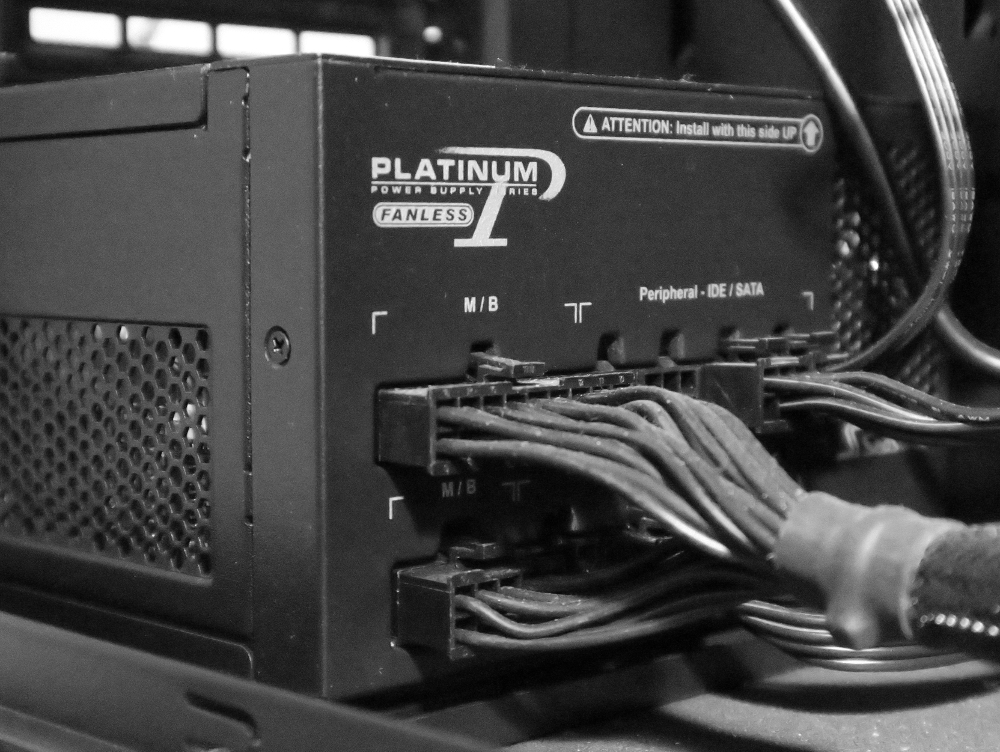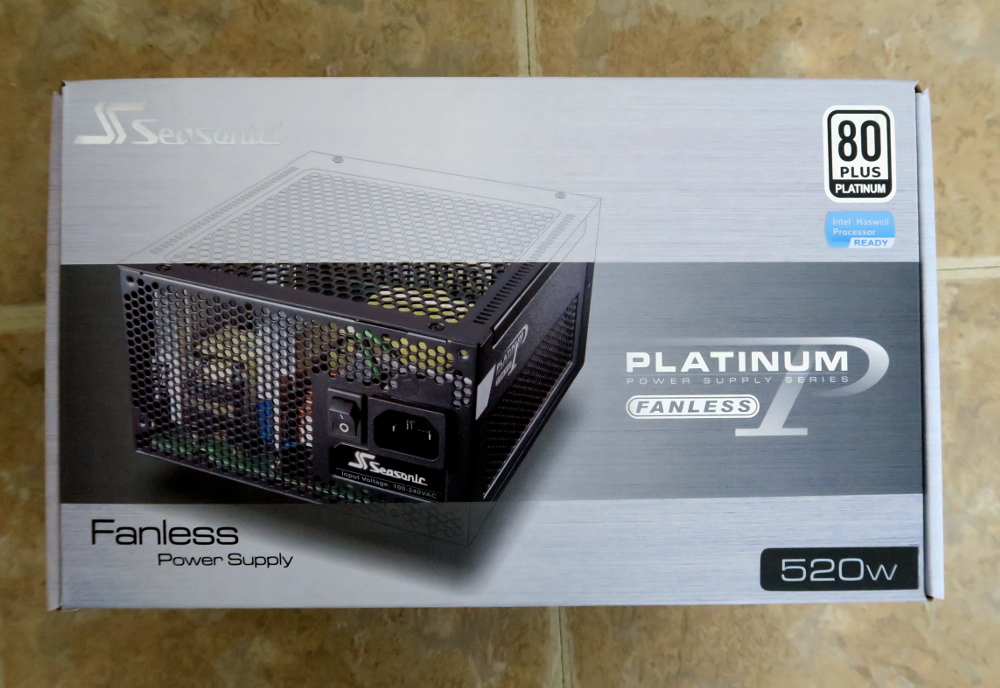
I have used a lot of power supplies throughout the years for my personal computers and when I have done system builds for others.
For me, the best power supply brands are SeaSonic and Antec for general usage. I am a huge fan of the SeaSonic Platinum series and think it works well for general computing needs.
But, manufacturers such as EVGA, Cosair, Thermaltake, and Cooler Master make good PSUs, too.
Before I explain why I prefer the SeaSonic Platinum, I want to look at concerns I have when buying a good computer power supply and what to look for in a high quality unit.
Read customer reviews of the best power supply brands on the market on Amazon.
General overview
Many people will build a system and focus on the motherboard, CPU, RAM, and GPU. The power supply and case will be a second thought. That should not be the case.
The power supply is essential to a machine’s reliability and stability.
Choose a reputable manufacturer, such as Cooler Master, EVGA, Cosair, Thermaltake, Antec or SeaSonic. There are other good power supplies for the money, but I am most familiar with these.
Also, not every PSU these manufacturers produce is perfect. Research the unit for your needs.
It is worth repeating: Research is essential. Read (and understand) the motherboard’s requirements before buying a PSU.
Also know your requirements — i.e., are you building a high-power-consumption-gaming rig, a low-power-consumption-general-computing rig, or something else.
After the below review is a general overview of PSUs.
SeaSonic Platinum review
 The SeaSonic Platinum series is one of my favorite power supplies.
The SeaSonic Platinum series is one of my favorite power supplies.
It is highly efficient (rated at 80 Plus Platinum) and comes in wattage ranging from 400 through 1200. (The downside is cost.)
My current computer, which I built in early 2015, uses the SeaSonic 520 Platinum fanless version.
I prefer the fanless versions in my computers because I require distraction free, quiet PCs. (I have had my share of hurricane-sounding PCs and am not going back.)
The SeaSonic has a honeycomb design for ventilation, which is very open.
When I first used this PSU, I thought the open design would leak out heat into my Antec P280 computer case. It does not.
There is very little heat coming out of this design, which is one value for getting an efficient 80 Plus Platinum rated unit.
I used the 520-watt version, which is the largest wattage fanless supply SeaSonic offers, for my rig.
Note: This is not a gaming computer. My rig is used for general computing, mainly spreadsheets, photo editing, and web publishing. The fanless version is not the best power supply for gaming. Gamers (and other high-power-consumption users) need fans!
Reliability and stability are extremely important in this machine, which is rarely turned off.
The 520 watt version is plenty for my Linux-based computer — a Z97 based motherboard with an i3-4330 Haswell dual core, 8 gigs of DDR3 1600, a 1 terabyte hard disk drive, and two under-volted 120mm case fans.
I probably could have bought a lower wattage version, but I wanted to make sure I had plenty of overhead in case I added additional hard disk drives and a graphics card.
So far, the power supply has been reliable and stable. I don’t have to think about it, which is the way it should be. It just works. And it makes no noise. Perfect.
Read customer reviews of the best power supply for the money on Amazon.
Overview of what to look for when buying a power supply
Form factor
Power supplies come in different form factors, including ATX, ATX12V, EPS12V, SFX12V, and a few others.
The biggest change between form factors is size, voltage, and connectors.
Most modern computers use the ATX12V form factor, with some high-end motherboards using the EPS12V form factor.
Before buying a PSU, check the motherboard specifications for the PSU needed.
Weight
Weight can be an indicator to the quality of the PSU. Heavier units almost always have larger heat sinks and better internal components, such as capacitors. The high quality components increase the weight of the unit.
Connectors
Make sure the PSU’s connectors are compatible with the motherboard.
PSUs come with different style main connectors, including 20 pin, 20+4 pin, 20+8 pin, 24 pin, or 24+8 pin. Check with the motherboard manufacturer so you get the right one.
The same holds true about PCI-Express connectors, SATA power connectors, CrossFire capabilities, SLI, Molex connectors. You may need these connectors if your motherboard supports them and you plan to use them. Do research and determine your needs.
+12V rails
When it comes to the +12V rails, you have a choice between a single or multiple rail setup depending on your motherboard and your needs.
Determine the number of +12V rails is dependent on you and your system.
Wattage
PSU output is measured in watts. The more wattage the PSU can supply the more power it can deliver to your system.
Output can range between 200 to 2000 watts depending on the unit. (A 2000-watt unit would be used in a super high-end build.)
Wattage needs should be determined by accounting for all PC components potentially drawing electricity. The easiest method for a ballpark figure is to use a PSU calculator like this one.
A power supply should be able to power your components and have extra headroom. The headroom ensures enough power for additional upgrades or add-on components at a later date.
Generally, a higher rated wattage is optimal as long as it is a quality unit.
Speaking of wattage: A high wattage PSU rating indicates the max wattage it can provide to the PC parts, not the amount of electricity used from the outlet.
Efficiency is king
PSUs with higher efficiency generate less heat, don’t waste as much power, and overall have better internal components.
The “80 Plus” certification on a PSU indicates that it is providing 80 percent of its rated wattage. The 20 percent becomes heat.
Within the certification, there are six levels, including 80 Plus, Bronze, Silver, Gold, Platinum, and Titanium. Efficiency is improved at each level.
An important point about efficiency is the less heat generated. This ties in with fan noise.
Fans
Fans draw the heat out of the power supply. Fan sizes can range from 80mm to 140mm. Some PSUs may be fanless.
Generally, the smaller the fan is the louder it is because it spins at a higher revolutions per minute. As fans increase in size their revolutions per minute decreases, so does volume.
Many PSUs have an automatic fan speed adjustment, which changes fan speed based on temperature.
Fanless models are great for low-power systems. They do not work in systems with high power consumption — e.g., a fanless PSU would not work in a gaming rig.
Find the best power supply brand in 2023 on Amazon.
Originally posted 2022-04-07 17:37:14.


